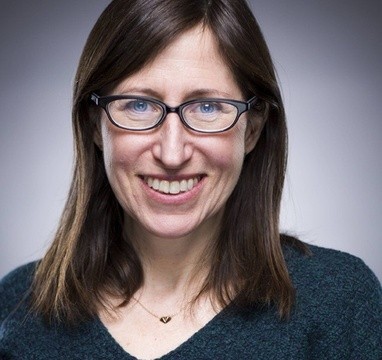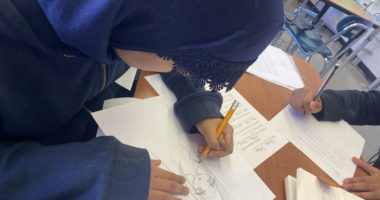In part one of this three part blog series, staff writer, Katie Rainey, explores Community-Word Project’s beginnings with one of this year’s Annual Benefit Honorees: Echoing Green. Read part two here and part three here.
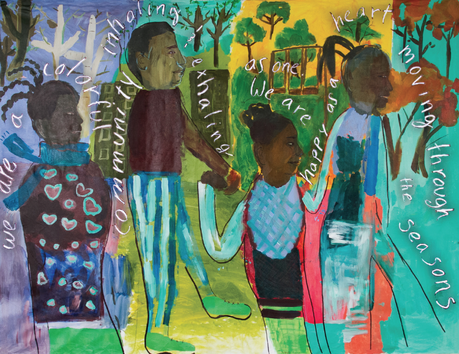
It started with a haiku.
17 syllables and a life changed.
If you’re familiar with Community-Word Project, you’ve probably heard Founder & Executive Director, Michele Kotler, talk about her sixth grade teacher Mr. Kluger, a musician, and how he changed her thinking about school and learning through the power of poetry and rhythm. We’ve heard this story, about the intersection of art and learning, about how creativity can open a struggling student to possibilities previously unknown.
But what about Community-Word Project as an organization?
Where did that idea come from and how did Michele become a social entrepreneur?
It started with a community poem.
Michele was a graduate writing student at the University of Michigan and teaching an undergraduate creative writing class. Having come from Jamaica High School to Sarah Lawrence College to University of Michigan, Michele saw how dramatically disparate the educational landscape was across various lines, including class, race, and gender. Her undergraduate class was a diverse representation of what she’d seen over the years, and Michele wanted to find a way to give to them what Mr. Kluger had given to her. That’s when she discovered anaphora and the power of the community poem.
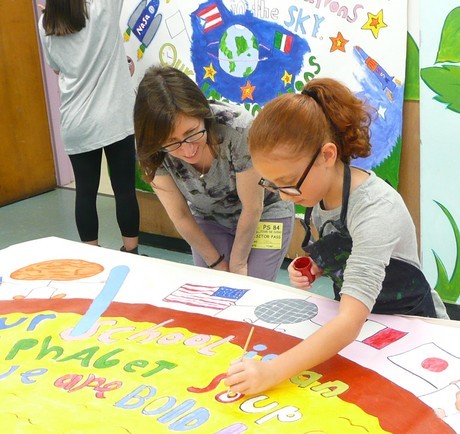
“Anaphora!”
“Anaphora!” they repeated.
“The beginning of a line that repeats.”
“The beginning of a line that repeats.”
Anaphora is a poetic device that is now a staple in Community-Word Project classrooms and our community poems. Michele used this same call and response twenty-plus years ago to teach her undergraduate students and led them in her first collaborative art-making lesson.
Michele didn’t want the poem to be about just anything. She wanted the poem to stand for something, for the students to experience the power their voices could have and how that power could make a difference. The class decided to create the first Community-Word Project community poem around violence against women.
Together, they performed their community poem on campus, using their voices to speak out against injustices they’d witnessed. Standing that day, side-by-side, in a packed room before a cross-section of students, performing words they’d written together, something changed. Something grew between them that hadn’t existed before, something inspiring, something bigger than any of them. Suddenly, the dynamic of the class changed. The students related to one another differently, they were more open to hearing each other’s thoughts. The students learned the power of collective voice and Michele learned that if kids are really invested in that collective voice that they collectively listen, respect, and care. There was now a strong, outspoken community where there hadn’t been before.

Michele knew that this work had to be shared. But how?
The following months would send Michele on a wild adventure across the country, teaching in K-12 schools for the first time, involving her in a PBS documentary, creating teacher workbooks based on her findings, all culminating in her taking Teaching Artist positions in her home city of NYC. There, she worked across a spectrum of organizations and boroughs, teaching alongside artists who had been in the field for some time. She saw the power of arts in the classroom and learned how drastically one Teaching Artist can change a life. She also saw how quickly someone without experience can negatively affect a child. She saw Teaching Artists who had no connection to communities, no concrete lesson planning or curriculum skills, no awareness of classroom management, and no real experience in the NYC educational landscape, trying to navigate classrooms in which she as a student had once felt so lost.
From this work, Michele solidified the three things she wanted to teach: 1) multiple intelligences, so students could learn through a variety of methods like she did with Mr. Kluger and his haikus, 2) collective voice, to bring students and communities together, and 3) artists, because students deserve strong, flexible teaching artists who are willing to serve them. Michele approached various organizations with this proposal to create teaching artist training programs and help improve classroom residencies, but no one seemed interested in investing in teaching artist training. The kernels of Community-Word Project were there, it was finding the right soil to sow them.
It would be through the dedicated staff of DreamYard Project in the Bronx that Michele was introduced to Echoing Green and Community-Word Project would no longer be just an idea. Also a product of an Echoing Green Fellowship, DreamYard served as an example for Michele. Along with her teaching partner Tamara Smith, Michele drafted her initial abstract for Community-Word Project and applied for an Echoing Green Fellowship.
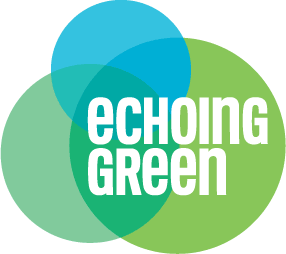
Through the application process, in which Michele gained experience writing white papers on Community-Word Project and perfected her pitch in a series of interviews, – including an interview with Ed Cohen, one of the Founders of Echoing Green – they were awarded a two-year Fellowship, which included their salaries, health insurance, and technical assistance with starting the organization. That seed money allowed them the freedom and opportunity to deeply develop the vision for Community-Word Project. They started in three schools in East Harlem, the Bronx, and the East Village, as well as piloting the first teaching artist training program at Sarah Lawrence College in 2000.
Echoing Green gave Michele the chance to make her vision a reality. The Fellowship also gave her a lifelong community of passionate social entrepreneurs across many sectors. The Echoing Green community has for 20 years been instrumental to Community-Word Project’s success and growth.
